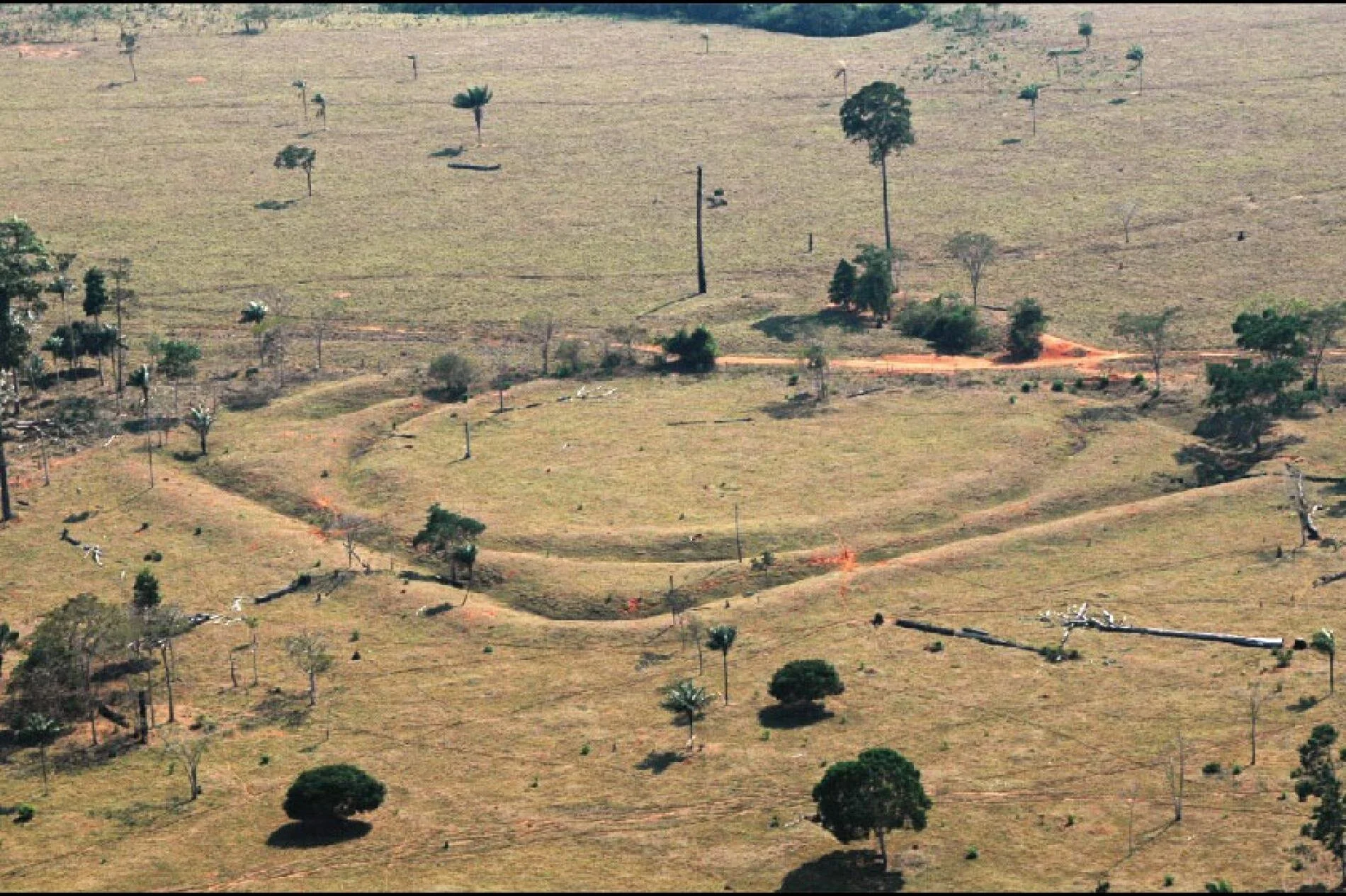Amazon Jungle Once Home to Millions More Than Previously Thought
Geoglyphs in the southern Amazon are evidence of a once-thriving population.
PHOTOGRAPH COURTESY OF UNIVERSITY OF EXETER
Forget small nomadic tribes and pristine jungle: the southern Amazon was likely covered in a network of large villages and ceremonial centers before Columbus.
BY ERIN BLAKEMORE
PUBLISHED MARCH 27, 2018
BEFORE SPANISH INVADERS conquered South America, sparse groups of nomadic people clustered around the Amazon River, leaving the surrounding rain forest pristine and untouched.
Or did they?
New research suggests a very different story—an Amazonian region peppered with rain forest villages, ceremonial earthworks, and a much larger population than previously thought.
The research, funded in part by the National Geographic Society and published today in the journal Nature Communications, challenges a common perception of the pre-Columbian Amazon rain forest as sparsely populated. That perception has endured despite 16th-century accounts of large, interconnected villages that go against modern assumptions.
“Many people have the image that it’s an untouched paradise,” says Jonas Gregorio de Souza, an archaeologist at the University of Exeter who collaborated on the project. Much of the region is unexplored and covered in dense forest, so it’s been inaccessible to archaeologists interested in learning more about life away from the mighty river.
Until now. The team used satellite imagery to try to identify ancient geoglyphs—earthworks likely used for ceremonies—in previously unexplored parts of the Brazilian state of Mato Grosso.
Then, armed with the coordinates of likely geoglyphs, they headed to the field—sometimes literally, since large swaths of land in the region are used for agriculture. Sure enough, each of the 24 targets they visited was the real deal. “Everything made sense,” says de Souza. “We knew we were in a special area.”
At one site, the team went deeper. They located ceramics and charcoal suggesting a village that dated to about 1410 A.D.
Back in the office, they used their findings to predict where other sites might be located, creating a computer model that took everything from elevation to soil pH to precipitation into account. It showed that people would likely have built geoglyphs in higher-elevation areas with big variations in seasons and temperatures.
The model also showed that people wouldn’t necessarily have built close to rivers, an idea which runs counter to modern assumptions. It revealed that there are likely 1,300 geoglyphs and villages in a 154,000 square-mile swath of Southern Amazonia—two-thirds of which haven’t been found yet.
The computer model also predicted population densities that were much larger than expected. The team now thinks that between 500,000 and 1 million people once lived in just seven percent of the Amazon basin. That flies in the face of previous estimates that only about 2 million people lived in the entire Amazon basin.
The distribution of the potential sites suggests an interconnected, advanced series of fortified villages spanning over 1,100 miles that flourished between 1200 and 1500 A.D. “We need to re-evaluate the history of the Amazon,” said José Iriarte, archaeologist at the University of Exeter, National Geographic Explorer, and the paper’s primary author, in a press release.
So what happened to the rain forest-dwelling people? De Souza says they died out after the European conquest of the region. Disease and genocide wiped out entire villages, and many others abandoned agriculture altogether. “They had to be on the move constantly,” he says. But the traces they left behind mean there’s still more to learn about their now-vanished civilization.
